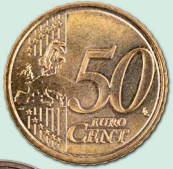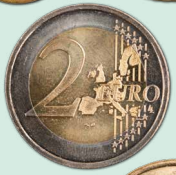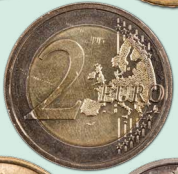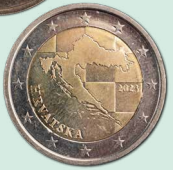Most commonly used cards: coins
We pay less and less with it, but even our coins have a map. The five-euro cent shows a globe with Europe in the centre. The fifty-euro cent shows the European Union, regardless of whether countries have adopted the euro, and the two-euro coin shows all of Europe, including Norway and European Russia. Before 2007, the one- and two-euro coins also showed only the member states of the Union. There is an idea behind this: Europe has a place in the world, and all EU countries are expected to eventually adopt the euro. But the EU also seems intent on representing
all of Europe, i.e. including Turkey, although only the ‘European’ part of Turkey is on the currency. Only Estonia and Croatia, in their own design, also put their map on the national side of the currency.

(ECB) L. Luycx, 5 eurocent, (Amsterdam) 2003. Coll. S/T Y.8b.21, 2 x 2 cm.

(ECB) L. Luycx, 50 eurocent, (Amsterdam) 2012. Coll. S/T Y.1d.1, 2.5 x 2.5 cm.

(ECB) L. Luycx, 50 eurocent, (Zagreb) 2023. Coll. S/T Y.1d.4, 2.5 x 2.5 cm.

(ECB) L. Luycx, 2 euro, (Amsterdam) 2003. Coll. S/T Y.1d.2, 2.5 x 2.5 cm.

(ECB) L. Luycx, 2 euro, (Amsterdam) 2012. Coll. S/T Y.1d.3, 2.5 x 2.5 cm.

(ECB) L. Lohmus, 1 euro, (Tallinn) 2011. Coll. S/T Y.2b.36, 2.5 x 2.5 cm.

(ECB), S. Pranjcovic, 2 euro, (Zagreb) 2023. Coll. S/T Y.2m.7, 2.5 x 2.5 cm.
